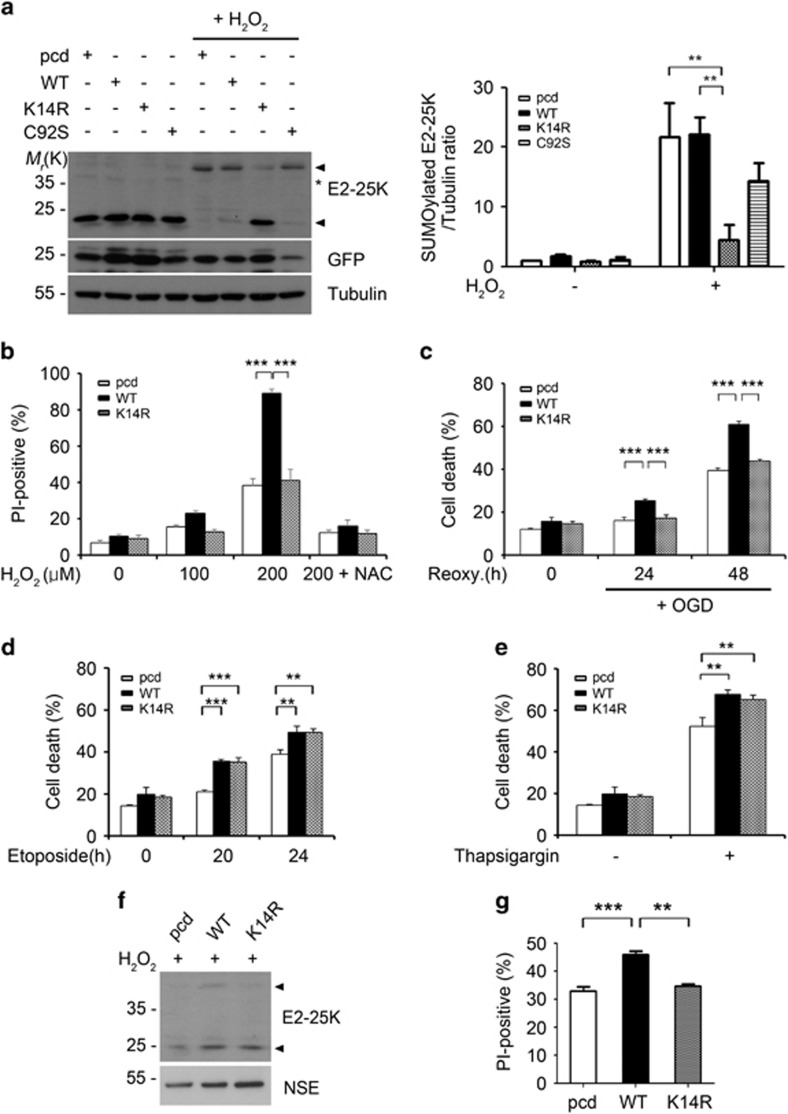Figure 2.
E2-25K SUMOylation at Lys14 promotes cell death under hypoxia and ROS stress. (a) SH-SY5Y cells were transfected with GFP (as a transfection efficiency control) and pcDNA (pcd), E2-25K WT or mutants (K14R, C92S) for 24 h and then treated with 150 μM H2O2 for 9 h followed by western blotting (left). The signals on the blots were quantified and bars indicate mean±S.E.M. (n=3, two-way ANOVA followed by Bonferroni's post hoc test, **P<0.01; right). (b–e) SH-SY5Y were transfected with pcDNA (pcd), E2-25K WT or K14R for 24 h and exposed to H2O2 for 16 h (b), OGD/R (c), 50 μg/μl etoposide (d) or 2 μM thapsigargin (e) for 24 h. Bars indicate mean±S.E.M. (n=3, two-way ANOVA followed by Bonferroni's post hoc test, **P<0.01. ***P<0.001). (f and g) E2-25K KO mouse cortical neurons (DIV-10) were transfected with pcDNA (pcd), E2-25K WT or K14R and treated with 100 μM H2O2 for 12 h. The levels of SUMOylated E2-25K were examined by western blotting (f) and cell death rates were determined after propidium iodide staining (g) (mean±S.E.M., n=3, one-way ANOVA followed by Tukey's post hoc test, **P<0.01, ***P<0.001). Arrow heads and asterisks indicate E2-25K and non-specific signals, respectively

